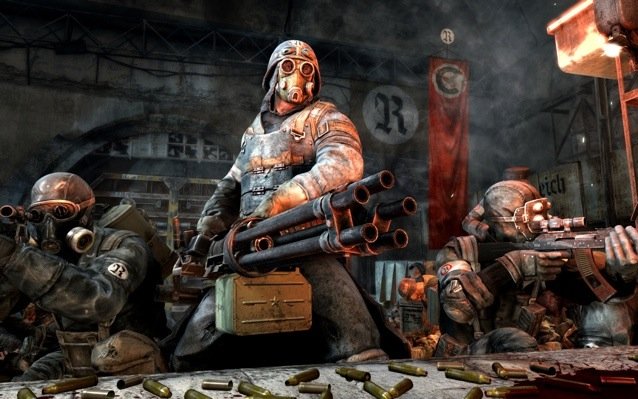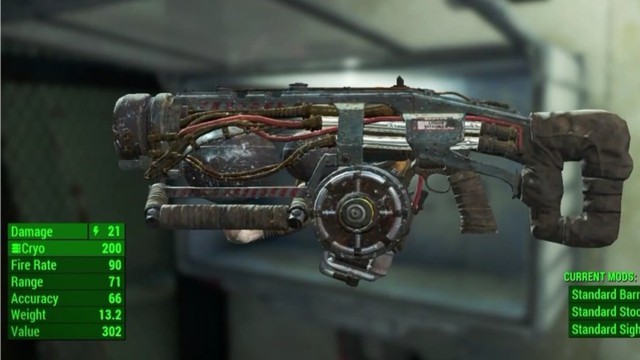

The Xbox One has finally landed, and along with it, a handful of exclusive launch games to entice early adopters. Among them is developer Crytek’s Ryse: Son of Rome, which holds the distinction of being the Xbox One’s only retail launch exclusive that doesn’t have a sequel number tacked onto the end. With the power of an updated CryEngine behind it, this third-person action adventure boasts a stunning visual feast that will give players’ eyeballs more than their fill. Unfortunately, a handful of mechanical and design shortcomings keep this new IP from being the killer app that console buyers were hoping for, but that doesn’t mean it should be overlooked entirely.
Ryse: Son of Rome is at its best when it’s using everything in its next-gen bag of tricks to get players invested in the story. Telling the story of Roman soldier Marius Titus, Ryse lets players pick up a sword and shield as they control Marius on his quest for vengeance. Hacking and slashing reaches new levels of visceral realism thanks to a down-and-dirty presentation that pulls no punches. Marius is promised as much blood as he can handle and that promise is delivered upon for the player.
Before the game’s 6-7 hour campaign is over, heads are severed, torsos are relieved of their cumbersome limbs, and impalement makes a strong case for becoming the Roman national pastime. The most brutally nasty bits are highlighted with the game’s execution system that slows down the action 300-style so that players don’t miss a single bloody drop. This system proves quite effective in providing pure raw engagement – for the first hour or two. Unfortunately, beyond that, players will soon realize that the mechanical foundation upon which all this visual flair is built is pretty shallow.
With franchises like God of War and the Batman: Arkham games giving the third-person brawler genre some spotlight, Ryse should have found itself in a prime position to stand alongside those titles had it not dropped the ball in the most important aspect of the genre: the combat. Simply put, it’s just too repetitive. Since Ryse takes a decidedly more realistic approach to it’s combat, it can’t be faulted for not giving Marius the outlandish move-set of Kratos or the acrobatic ass-kickery of Batman. What it can be faulted for is this: Block, Sword, Sword, Shield, Sword, Execute. That’s the combo that will get players through most of the game. And it will be done ad nauseam.
There are a few variations along the way, as players may need to knock the occasional shield away first or call for a specific soldier formation, but for the most part, every single battle plays out the same. The lack of any combo upgrade system means that most encounters are nearly visually identical each and every time. Mechanically, what’s offered is a great skeleton to a smoothly running fighting system. However the issue isn’t that there isn’t enough meat on the bones, it’s that there isn’t any meat at all.
Accompanying basic sword and shield attacks is the aforementioned execution system. This is where what little variety the game does offer is found. After buttering up enemies with a few quick attacks, a prompt appears to begin an execution. These sequences function mostly like a quick-time event, but there is some innovation here. Rather than flashing arbitrary commands on screen, the enemy will glow either blue, which is linked to the blue X button and sword attack, or yellow, which is linked to the yellow Y button and a shield attack. Aside from using a less jarring visual scheme for these moments, the real difference maker here is that they can’t be failed. Marius will carry on with his cutlery demonstration regardless of player input, but paying attention is still key as these events are tied to the game’s perks system. Hitting the correct buttons will add to a multiplier gives the player a greater perks payout at the end of each combo. It really is a clever way to keep the cinematic action moving while still rewarding players for staying engaged.
Unfortunately, not every aspect of this system combination is a good one. The perks themselves allow the player to decide whether or not to receive an increase in health, XP, damage or focus (Think Kratos’ Rage Meter.). Each is assigned a quick-command on the D-pad, and players may switch between them at will. The problem is that they simply make the game far too easy, and since executions are performed constantly, so are the payouts. Players will rarely run out of health, and using the XP boost makes obtaining what few upgrades the game does offer a breeze. There are numerous executions to unlock, which is why it’s so bewildering that the game constantly recycles the same small set of animations. These are the icing on the violently delicious combat cake, but after tasting the same bite time and time again, players are likely to look for a new dish.
Most of the brightest spots are found in the game’s presentation and narrative. Told mostly in flashback, Ryse’s story of revenge, betrayal, and honor proves compelling enough thanks to above-average voice work from most of the cast. Emperor Nero’s son Basilius is especially entertaining with the voice actor clearly reveling in the character’s scenery-chewing persona. While the second act does meander a bit, Marius’ journey is well told, and the conclusion is mostly a satisfying, albeit predictable, one.
Saving the best feature for last, Ryse utilizes the newly beefed-up CryEngine to say, “Not so fast,” to detractors who would claim that their won’t be much of a visual upgrade with this new generation of consoles. This game is absolutely breathtaking. From detailed facial animations to varied locales, this is game has come right out of the gate to already set a graphical benchmark for other games to achieve. Forests live and breathe, light dances on Marius’ armor, and every surface looks as though the player could reach out and touch it. First and foremost, Ryse is a visual showpiece for the Xbox One launch and the only glaring issue we found with the visuals is how it renders water. While it never looks bad, the results are wildly inconsistent and never feels on par with the rest of the environments. There is also the occasional glitch, namely a bit of pop-in and some random clipping, but these are small hiccups in an otherwise spectacular display. In fact, getting to lay eyes on the gorgeous scenery will, for many, become the primary reason to fight through the game’s repetitive design.
A cooperative multiplayer mode throws players into The Colosseum where, with one other player, they get to kill lots and lots of enemies. The mode does try and keep things varied with different settings and objectives, but player mileage here will depend heavily on how much they enjoyed the basic mechanics to begin with because there is nothing new on display.
Boiled down to its essence, Ryse: Son of Rome is a visual work of art whose gameplay mechanics need to be fleshed out. Players who enjoy the sword-and-sandals motif will be treated to a competent story and, from time to time, engaging moments of ancient warfare. Others will be put off by the lack of variety in combat and lack of challenge. You’ll be hard pressed however, to find many negative things to say about the game’s eye-popping step into next-gen graphics. While Ryse may not be the train wreck that some feared, it just doesn’t live up to the potential that many others hoped for.
Ryse: Son of Rome is currently available exclusively on Xbox One.




 Teach Kids About Money With Tips From The Rich
Teach Kids About Money With Tips From The Rich Titanfall Hints and Tips for Beginners
Titanfall Hints and Tips for Beginners 5 Reasons to Ditch OBS and Buy an XSplit License
5 Reasons to Ditch OBS and Buy an XSplit License How to Unlock the Cryolator in Fallout 4
How to Unlock the Cryolator in Fallout 4 Bewitched: Top 10 Reasons to be Excited about The Witcher 2
Bewitched: Top 10 Reasons to be Excited about The Witcher 2